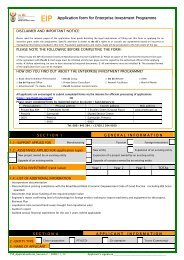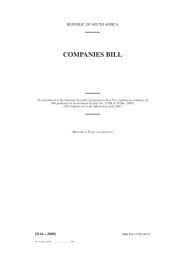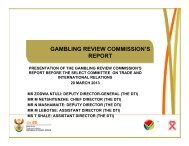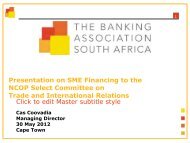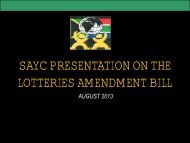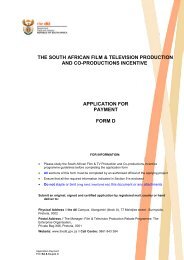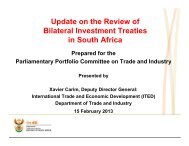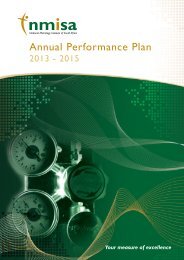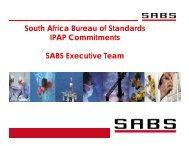Copyright Review Commission Report - ICT Law and Regulation ...
Copyright Review Commission Report - ICT Law and Regulation ...
Copyright Review Commission Report - ICT Law and Regulation ...
- No tags were found...
Create successful ePaper yourself
Turn your PDF publications into a flip-book with our unique Google optimized e-Paper software.
4.2 DIGITAL COPYRIGHT LAW4.2.1. Traditional underst<strong>and</strong>ings of music performance, reproduction <strong>and</strong> distribution face new challenges in a worldof podcasts, webcasts <strong>and</strong> the streaming of music.4.2.2. The ‘analogue’ reproduction right is translated to the digital era with ease. The downloading of a work on amobile device is, for example, a reproduction <strong>and</strong> one of the exclusive rights reserved for the copyright owner.4.2.3. However, the digital transmission of copyright works on networks falls outside the traditional notion of ‘makingworks available to the public’ (performing, broadcasting <strong>and</strong> diffusion), <strong>and</strong> the interactive nature of digitaltransmissions exacerbates the problem.4.2.4. An additional factor that distinguishes the digital from the traditional, physical distribution of music is the‘incidental’ or ‘cached’ reproductions that are made while digital music travels to its final destination. (In the US,music publishers have dem<strong>and</strong>ed royalties for these ephemeral reproductions – see Day 2010 204-206; Cardi2007 at 855-856; Loren 2003 at 702-703.)4.2.5. To deal effectively with digital acts of exploitation, such as the uploading of a work to a server or the streamingof sound recordings, a new right, namely ‘communicating the work to the public’ was devised. In December1996, WIPO adopted two new treaties, the WIPO <strong>Copyright</strong> Treaty (WCT) <strong>and</strong> the WIPO Performances <strong>and</strong>Phonograms Treaty (WPPT), together commonly referred to as the ‘Internet treaties’.4.2.6. The WCT <strong>and</strong> WPPT entered into force in March 2002 <strong>and</strong> May 2001 respectively. Key aspects of thesetreaties are: the right of authors of literary <strong>and</strong> artistic works to authorise the communication of works to the public; the right of making available a performance <strong>and</strong> a phonogram; performers are granted moral rights; the management of rights information <strong>and</strong> the anti-circumvention provisions; <strong>and</strong> the extension of limitations <strong>and</strong> exceptions to the digital environment.4.2.7. The WCT <strong>and</strong> WPPT oblige members to provide legal remedies against the circumvention of technologicalmeasures to protect the rights of the copyright holders. <strong>Copyright</strong> owners are increasingly taking advantage oftechnical protection measures (TPMs) to protect their intellectual property. TPMs include: measures for access control <strong>and</strong> anti-copy devices; proprietary viewer software; encryption; passwords; watermarking; fingerprinting (user-authentication); metering <strong>and</strong> monitoring of usage; digital registration of the works at various institutions; <strong>and</strong> remuneration systems.- 29 -



